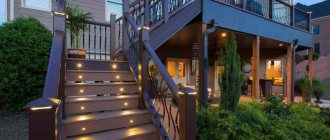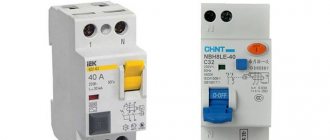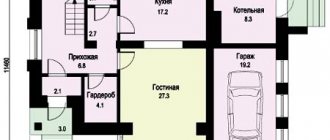Lighting in a private house differs from that in an apartment, since here you have to independently determine the location of the devices, lay the cable and carry out other mandatory work. If standard solutions are used in apartment buildings, then in the private sector any option that meets safety standards can be implemented.
Lighting in the home should be comfortable and safe.
Exterior lighting of a private home
Main tasks of street lighting:
- Decorative . Creating an attractive design on the territory
- On duty . Illumination of main paths for convenient movement in the dark
- Protective . Lighting the area to prevent unauthorized persons from entering the territory.
Street lighting of a private house and garden plot is not only a way to illuminate the territory, but also a kind of alarm system (if there are motion sensors or photo relays for street lighting) and emergency lighting. Outdoor lighting can be classified into two categories: street lamps and lamps.
Garden lanterns for a country house
Outdoor lanterns allow you to illuminate the area with high quality and create a unique landscape design. The devices are great for beautiful lighting of garden paths and architectural objects.
The range of types and styles of lanterns allows you to choose an option for even the most fastidious owner of a private plot: classic, hi-tech, French, English and oriental stylizations and many others. Read about the types of street lighting lamps on poles in this material.
Lamps for summer cottage and yard
No landscape design of a private area is complete without street lamps. The devices are indispensable from both a functional and aesthetic point of view. Properly selected and placed lamps will transform the area beyond recognition and give it a distinctive style. They are installed outside the house, usually wall-mounted, and illuminate the local area and entrance.
Types: wall-mounted, hanging for local areas
There are:
- Hanging
- Wall mounted
- LED
- With motion sensors
- With light sensors
- Lamps built into the ground or sidewalk.
The sizes of curb stones are described in detail in this article.
All types of lamps for the garden or home are airtight and resistant to environmental influences. You can buy any of them in specialized lighting stores.
When selecting lighting fixtures for a summer house or home, you should pay more attention to lamps, since they are the ones that affect the lighting effects:
- Hanging . Suspended at a distance from the ceiling. They are held using a chain with height adjustment up to 1 m. The best places to use hanging models: the exterior of the building, as well as canopies, gazebos and other outdoor structures.
- Wall mounted . These models are installed on building facades, supports, low columns and consoles. They can also be built into steps or a wall thanks to a plastic case with a special fastening, and they can also be used to automatically illuminate the stairs.
- LED . LED models effectively save energy (2-3 times compared to other types of lighting) and are distinguished by an aesthetically pleasing appearance. As well as increased service life and high reliability. Such models work well at low temperatures and have shockproof properties.
Installation of street lighting
Installing street lights for a country house yourself is not so difficult. The main thing is to follow a few important rules and study possible installation methods.
Street poles
Lampposts not only allow you to install powerful lighting in the area, but also perform an aesthetic function in landscape design. To effectively install poles, it is necessary to compare the following parameters:
- Approximate pole height
- Light source power
- Intensity and brightness of the lamp.
Only with a competent analysis of the above factors will the pillars be installed correctly, and the owner of the site will avoid creating “blind spots”.
When installing poles, it is important to know the depth of freezing of the ground (for example, in Moscow it is 140 cm, and in the northern regions - up to 240 cm).
Table of soil freezing by region.
Brackets for installation outside the house
The brackets provide independent support for lanterns and lamps. Thanks to the brackets, the lamps are installed on the facades of houses, walls, lamp posts and other places, which allows them to be used to illuminate the yard.
We also recommend that you familiarize yourself with the features of luminous trees for the street.
Pass-through switch
A pass-through switch differs from a regular switch in the number of contacts. If a regular single-key one has 2 of them, then a pass-through one has 3 contacts. The incoming wire is connected to one, the wire going to the light source is connected to the other, the third goes to another similar switch.
The diagram shows the operating principle of pass-through switches
The two-gang switch has 4 contacts. The pictures clearly show how to control the light source using pass-through switches from 3 different places. On the block, special symbols show which contact corresponds to what. It is important not to confuse the connection order during installation.
Diagram for connecting the switches to each other: in the middle - a cross with 4 contacts for connecting the remaining switches to each other
Connection diagram for two-key pass-through switches
Various circuit options for connecting 3 pass-through switches
How to make outdoor lighting yourself
To install outdoor lighting yourself, you will need three large groups of devices:
- Lighting devices . Lamps, lanterns and so on.
- Control technology . Equipment for control and automation of street lighting. For example, setting parameters so that the lighting turns on at a certain time of day or even on a specific day.
- Communications . This group includes various cables, pipes, terminals, ties and other things used during installation.
Installation stages
The lighting installation work consists of several large-scale stages.
Design
If your home has a swimming pool or an outdoor staircase, then such lighting will look very elegant.
The first step is to create a plan and divide all lighting devices into groups, for example, devices for lighting paths in the garden into one, and facade lighting into another.
Preparation
After this, the stage of selecting places for the devices begins, holes are dug in them. They will serve as formwork for the subsequent pouring of the foundation. All holes must be connected with shallow (about 400 mm) trenches . Then, from the outer hole for the lamp, a trench is laid to the house to lead the wires into the electrical panel.
You will find all the information about LED street lights on poles here.
Laying communications
The next step is to lay the electrical cables. A layer of sand is poured into the trench and a wire wrapped in a special metal sleeve is laid. Each group of devices must be connected with a separate cable. All cables must be covered with a 100 mm layer of sand and laid on top with bricks in one layer.
Instead of brick, you can use crushed stone, which will also help protect the cables from mechanical damage.
Where the lamps will be installed, it is necessary to loop the wires outward. Then fill the hole with concrete and fill the ditches with dug earth.
Installation of the devices themselves
First you need to disassemble the lighting device: separate the lamp from the installation element. Then fold the cable into a loop and cut it, strip the ends and thread it through the installation element.
Next, the heel is attached to the foundation: holes are drilled in the concrete and the heel is nailed using dowels (or anchor screws, depending on the weight of the lighting devices).
After installing the installation element, you need to connect the lamp to the wiring and install it on the heel.
Important: do not forget about grounding. If there is no grounding, there is a high chance of electric shock and failure of lighting fixtures. Therefore, all street wires must be laid with a three-core cable.
Lighting automation
In its simplest form, lighting automation is the collaboration of presence sensors to turn on lights and motion sensors. When installing a control system, it is necessary to install an individual sensor for each group of lighting fixtures.
This system allows you to turn on only certain groups of devices. For example, only emergency lighting. This will significantly save money.
Features of power supply design
When electrical installation is carried out in a wooden house, its design features related to the shrinkage of the timber are taken into account. When developing a power supply project, you must:
- calculate the power and design loads of the equipment used or intended to be used;
- calculate the required cable cross-section;
- enter the location of the main consumers and equipment into the project;
- provide protection devices against current leakage and short circuit.
Outdoor lighting as part of landscape design
Outdoor lighting plays a huge role in the landscape design of the area. Just a few correctly selected and installed lanterns, and the garden will take on a completely different look in the dark.
Depending on the wishes of the owner of a private house, the site can be decorated in a variety of styles. These can be lanterns in the “modern” style, which will be an excellent addition to modern landscape design . Or, on the contrary, use a measured “empire” style, with the help of which the garden will acquire a peaceful and harmonious look.
Where to place the lamps
A beautiful effect can be achieved by installing lanterns near the trunks of branchy trees. The fixtures will diffuse light through the foliage, adding an atmospheric appearance to the area.
Or mount the lighting on low poles, which will act as elegant lighting. You can also install ball street lamps on poles.
Such devices allow you to beautifully decorate the facade of the house and give it an attractive appearance at night.
Don't forget about decorative lighting. Lamps along garden paths look cute and cozy. You can build them yourself thanks to special forms.
Find out how to make a mold for garden paths here.
When choosing lamps for decorative facade decoration, low-power models of 3-5 Watt are suitable . And when designing the design itself, you should pay attention to the backlight vector. For example, if you need to decorate the first floor, then it is best to place the lamps between or under the windows, and direct the light to the corners of the building and simply down.
Corner lamp models can be placed in the ceiling area between the second and first floors, and the light can be directed downwards.
The advantages of outdoor LED pole lights are outlined in this information.
Lights for gazebos
Gazebos use pendant lights. The brightness and type of lighting fixture are selected in accordance with the purpose of the gazebo. This can be a place for cozy evening conversations or reading and studying. For the first case, you will need lamps with soft and diffuse lighting, and for the second, brighter and more powerful lighting sources.
Video
The video illustrates how to install a lamp to illuminate a garden plot with your own hands:
Outdoor lamps for the home are an excellent way for the owner of a private plot to realize their creativity, as well as an opportunity to once again protect the territory from strangers. Recently, solar-powered street lights have become increasingly popular. It is not only convenient, but also economical. With street lighting, the area will be transformed at night, creating a charming and pleasant atmosphere in the yard.
Maybe
Autonomous lamps for a personal plot
Thanks to the development of the electric power industry, homeowners have an alternative solution - the use of autonomous lamps that are not dependent on power outages and power grids in general. Such lamps have a rechargeable battery, from which the lamp is powered at night. The battery is charged during the day from the sun's rays, which is quite enough to illuminate the area.
Advantages of autonomous lamps:
- Low power consumption. These lighting devices do not need to be connected to the network, and the device itself is built on the basis of LED lamps, due to which energy consumption is minimal.
- Long service life.
- Mobility. There is no wiring, so installation and dismantling of lamps can be done in a matter of minutes. This is especially true for summer residents who remove appliances for the winter period.
- Low cost of the lighting system, since there is no need for excavation and electrical installation work.











